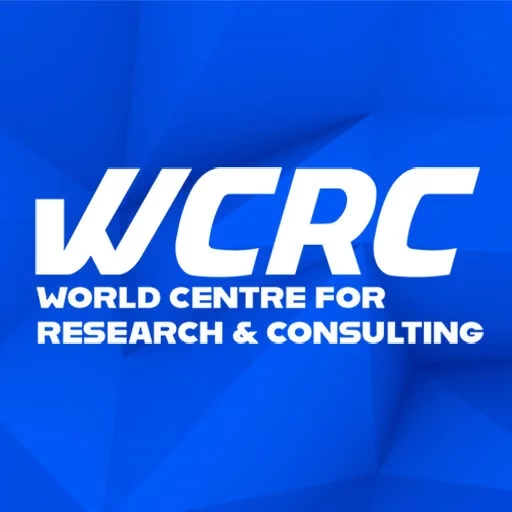The ascension to the CEO’s chair marks a pivotal transition, one that disrupts the existing equilibrium and thrusts the newly appointed leader into uncharted territory. This inaugural year is a crucible, testing the CEO’s mettle and shaping their legacy within the organization. Navigating this transformative period demands a deft blend of strategic foresight, adaptability, and an unwavering commitment to fostering a collaborative culture.
A compelling CEO Strategy for first year at the transition.
Assembling the Dream Team: A Top Priority
Successful CEOs understand that their ability to drive change and steer the organization towards success hinges on the caliber of their senior leadership team. As such, meeting, assessing, and if necessary, reshaping this core group becomes an immediate priority. The data underscores this urgency, with the study revealing that seasoned CEOs and first-timers alike rank assembling and aligning their senior team as the foremost concern.
- The ascension to the CEO’s chair marks a pivotal transition, one that disrupts the existing equilibrium and thrusts the newly appointed leader into uncharted territory. This inaugural year is a crucible, testing the CEO’s mettle and shaping their legacy within the organization. Navigating this transformative period demands a deft blend of strategic foresight, adaptability, and an unwavering commitment to fostering a collaborative culture.
- Assembling the Dream Team: A Top Priority
- Navigating the Unexpected: Surprises Abound
- Cultural Dissonance
- Operational and Financial Revelations
- Positive Impressions
- Board Engagement and Emotional Weight
- Reflections and Regrets: Lessons for the Future
- Crafting a Roadmap: Strategies for a Successful Transition
- Align on the Strategic Vision
- Anticipate Constituent Concerns
- Prioritize Short- and Long-Term Objectives
- Embrace Change and Support
- Foster Ongoing Dialogue
- Conclusion
Timing is Paramount
The study’s findings shed light on the optimal timeline for effecting changes within the senior ranks. On average, new CEOs initiate their first leadership team alteration within 2.8 months of assuming the role. However, the process of curating the “right people” and fostering a high-performing unit extends over a more protracted period, averaging 9.2 months for the study’s participants.
Interestingly, the study unveils that CEO experience and whether the appointment was an internal promotion or an external hire play pivotal roles in dictating the pace of these changes. Internally promoted CEOs, armed with familiarity and existing rapport, often initiate the process well before their official start date. Conversely, external hires view their first day on the job as the true starting point for assessing and reshaping the team.
Furthermore, the organization’s performance status emerges as a catalyst for swifter action. CEOs inheriting underperforming businesses tend to implement leadership changes at a brisker pace, averaging 1.1 months for their first move, compared to their counterparts in well-performing companies, who take an average of 3.5 months.
A Continuous Journey
Assembling a cohesive and high-performing senior team is a continuous process, often extending well beyond the inaugural year. The study reveals that more than half (55%) of the CEOs interviewed were still striving to optimize their team’s performance, even after an average tenure of 14.25 months. This underscores the importance of managing expectations – both personal and those of stakeholders – regarding the timeline for achieving a fully synchronized and productive leadership unit.
Navigating the Unexpected: Surprises Abound
For even the most seasoned executives, the CEO role harbors its fair share of surprises. The study’s participants shed light on the areas that caught them off guard, offering valuable insights for those embarking on this transformative journey.
Cultural Dissonance
A staggering 75% of new CEOs reported feeling negatively surprised by the reality of the organizational culture they encountered. This disconnect between perception and reality highlights the importance of conducting thorough due diligence and maintaining an open mind when assessing the existing cultural landscape.
Operational and Financial Revelations
Closely mirroring the cultural dissonance, 63% of the study’s participants found the operational and financial state of the business to be worse than anticipated. This revelation underscores the need for comprehensive audits and transparent communication during the transition process to ensure a clear understanding of the organization’s true condition.
Positive Impressions
Amidst the surprises, one aspect emerged as a consistent source of optimism: the quality and dedication of the workforce. An overwhelming 89% of respondents expressed positive surprise at the caliber and commitment of their employees, a testament to the inherent value within the organization.
Board Engagement and Emotional Weight
The study also highlighted two lesser-known but equally impactful aspects of the CEO role. Firstly, 45% of participants reported spending more time on board-related activities than anticipated, underscoring the importance of cultivating strong relationships and clear communication channels with this critical stakeholder group. Secondly, 36% cited the emotional weight of the position as a surprising and challenging factor, emphasizing the need for resilience and emotional intelligence in navigating the role’s demands.
Reflections and Regrets: Lessons for the Future
As the inaugural year draws to a close, CEOs often find themselves reflecting on their journey, contemplating the choices they made and the lessons learned. The study’s participants shared their most prominent regrets, offering invaluable insights for those embarking on this transformative path.
Accelerating Change
The most commonly cited regret, voiced by 66% of participants, was a desire to move faster in making changes to and building their teams. This sentiment was particularly pronounced among seasoned CEOs, whose previous experiences reinforced the importance of swift and decisive action in shaping the leadership ranks.
Interestingly, the study revealed that experienced CEOs, despite their regrets, were actually slower in implementing team changes compared to their first-time counterparts. This finding challenges the assumption that experience directly translates to expedited decision-making, underscoring the need for constant vigilance and a willingness to adapt one’s approach.
Adapting Leadership Style
Nearly half (48%) of the new CEOs expressed regret over their leadership style during the transition period. This manifested in three distinct areas:
- Assertiveness: A desire to “trust their gut” more when making decisions, paralleling the regret over not moving faster on team changes.
- Transparency: A recognition of the need for enhanced transparency in communicating changes to the board and the broader organization.
- Mentality: A quarter of those citing leadership style as a regret acknowledged taking too long to mentally transition into the CEO mindset, often continuing to think and act as if they were in their previous role.
Board Engagement
Finally, 25% of the study’s participants wished they had fostered stronger engagement with the board during their transition. This sentiment, coupled with the finding that over 63% of CEOs experienced some form of conflict with the board in their first year, underscores the importance of proactive communication and relationship-building with this critical stakeholder group.
Crafting a Roadmap: Strategies for a Successful Transition
Drawing from the collective wisdom of those who have navigated this transformative journey, several key strategies emerge as guideposts for incoming CEOs seeking to chart a successful course.
Align on the Strategic Vision
Ensuring alignment among the board, CEO, and senior leaders on the organization’s strategic direction is paramount. A well-defined and clearly communicated strategic plan serves as a North Star, guiding decision-making and fostering a shared understanding of priorities, even in the face of leadership transitions.
Anticipate Constituent Concerns
A successful transition requires proactive engagement with all stakeholders, both internal and external. By anticipating the potential concerns and reactions of constituents such as employees, clients, investors, and regulatory bodies, CEOs can develop tailored communication plans and foster transparency throughout the process.
Prioritize Short- and Long-Term Objectives
Incoming CEOs inherit a complex tapestry of challenges and opportunities, necessitating a clear delineation of short- and long-term priorities. By identifying and addressing urgent matters swiftly, while simultaneously establishing a roadmap for longer-term strategic goals, CEOs can maintain momentum and instill confidence in their leadership.
Embrace Change and Support
The degree of change required during a CEO transition varies, ranging from course corrections to complete transformations. Boards play a pivotal role in setting expectations and providing support to the incoming leader as they navigate the change process. Honest assessments, coupled with open communication channels and clearly defined roles, can facilitate a smoother transition.
Foster Ongoing Dialogue
CEO transitions are inherently disruptive, impacting every facet of the organization. Regular check-ins and candid dialogue with stakeholders throughout the inaugural year are crucial for gauging perceptions, addressing concerns, and fostering a sense of unity and shared purpose.
Conclusion
The inaugural year as a CEO is a transformative journey, replete with challenges, surprises, and opportunities for growth. By embracing the lessons and insights gleaned from those who have walked this path before, incoming leaders can navigate the uncharted waters with greater clarity and confidence. Ultimately, the success of this transition hinges on a CEO’s ability to assemble a high-performing team, adapt to the unexpected, learn from past experiences, and foster a culture of collaboration and strategic alignment. It is a journey that demands resilience, emotional intelligence, and an unwavering commitment to driving positive change within the organization.









